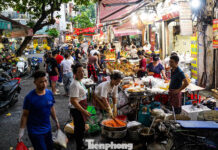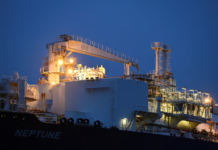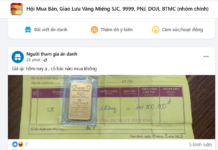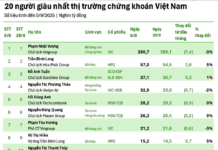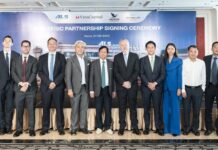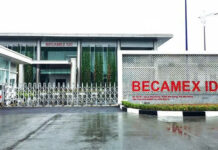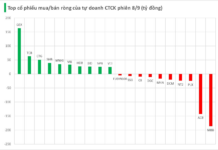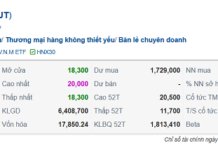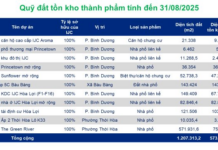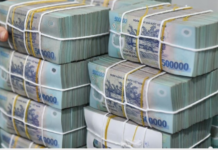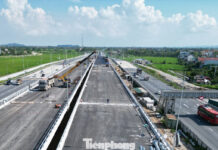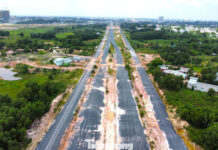At the seminar “Customs and Enterprises: Promoting the Flow of Import and Export Goods through the Cai Mep- Thi Vai Port Cluster,” organized by Hai Quan Magazine in collaboration with the Department of Transport and the Ba Ria-Vung Tau Customs Department on July 31st, it was revealed that the Cai Mep-Thi Vai port cluster is the main port cluster, currently accounting for 90% of import and export goods through the provincial port system of Ba Ria-Vung Tau.

Guests at the seminar on promoting the flow of goods through the Cai Mep-Thi Vai port cluster (Photo: Luu Son)
From its early planning stages until now, the Ba Ria-Vung Tau port and the Cai Mep-Thi Vai port cluster have always been oriented towards playing a crucial role as a transportation gateway and international integration, not only for Vietnam but also for the Southeast Asian region. This contributes to the economic development of the region and has great potential to enhance the country’s competitiveness.
Given its importance as a national asset, the Cai Mep-Thi Vai port cluster has received significant attention and strong direction from the Central Government, along with support from ministries, sectors, and the General Department of Customs, in improving the effectiveness of management, operation, investment, and development.
However, the Ba Ria-Vung Tau port still faces several bottlenecks that need to be addressed, including transportation infrastructure connectivity, administrative procedure reform, customs procedures, specialized inspection, logistics service ecosystem, and breakthrough policies such as open port and free trade area…
To facilitate the smooth flow of goods through the Cai Mep-Thi Vai port cluster, many port businesses, shipping lines, logistics companies, and industrial parks suggest reducing transportation costs and upgrading logistics and support services. Additionally, they propose dredging the channel leading to the port to allow large vessels to enter, creating a waterway from the Mekong Delta to the Cai Mep-Thi Vai port, and improving transportation connections from the port cluster to Cambodia. They also recommend the early implementation of policies to develop an “open port”…
Mr. Do Thien Anh Tuan, Dean of the Fulbright School of Public Policy and Management and Head of the Consulting Group for the Proposal “Developing Ba Ria-Vung Tau into a National Marine Economic Center,” emphasized that given the role and position of the Cai Mep-Thi Vai port cluster, ministries, sectors, and localities must consider the development of this port cluster as a national interest, not just a local one.

Mr. Do Thien Anh Tuan pointed out four bottlenecks hindering the flow of goods through the Cai Mep-Thi Vai port (Photo: Luu Son)
Mr. Tuan also identified four bottlenecks impeding the flow of goods through the Cai Mep-Thi Vai port cluster: infrastructure connectivity, policies and mechanisms, human resources, and administrative procedures.
“The flow of import and export goods through Cai Mep-Thi Vai faces four significant bottlenecks. In the proposal to develop the National Marine Economic Center, the consulting group suggested 12 breakthrough mechanisms unprecedented even in comparison to Resolution 98 of the National Assembly for Ho Chi Minh City. This poses a challenge for Ba Ria-Vung Tau in advocating for the Central Government’s support for some of these groundbreaking mechanisms and in pioneering the experimental implementation of certain policies and mechanisms,” proposed Mr. Tuan.
Accelerating Critical Transportation Projects: Building the Foundation for Growth
The year 2024 has been identified as the year of accelerated implementation of major transportation projects. Therefore, prioritizing public investment in transportation infrastructure is a pressing issue of great concern.



